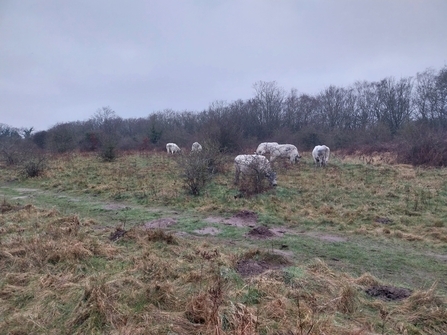The Sweet Briar herd of British White cattle wear collars containing a GPS tracker, allowing the reserve team to focus grazing in the areas that need it the most. The herd will play a vital part in the conservation management at Sweet Briar Marshes, helping to preserve the mosaic of different habitats, including those which form a Site of Special Scientific Interest (SSSI), and will therefore support a wider range of wildlife on the reserve.
NWT Sweet Briar Marshes will be open to the public in spring 2024, following a year of community engagement. This has fed into the shared vision for the future of the site.
Funding from Biffa Award, as part of the Landfill Communities Fund, has paid for the essential infrastructure needed to introduce the cattle to the marshes, namely a 2.6km long perimeter fence surrounding Sweet Briar Marshes and facilities for the cattle on site.
British Whites are among the earliest recorded domestic cattle breeds in Britain and have roots back to Norfolk from the late 1700s. They are ideal for conservation grazing as they are hardy and well-adapted to wet sites such as Sweet Briar Marshes. Reintroducing cattle here will begin to recover natural processes, whether that's the breaking down of vegetation to create a higher diversity of plant species, or the creation of bare ground to the benefit of feeding birds, invertebrates or basking reptiles.

